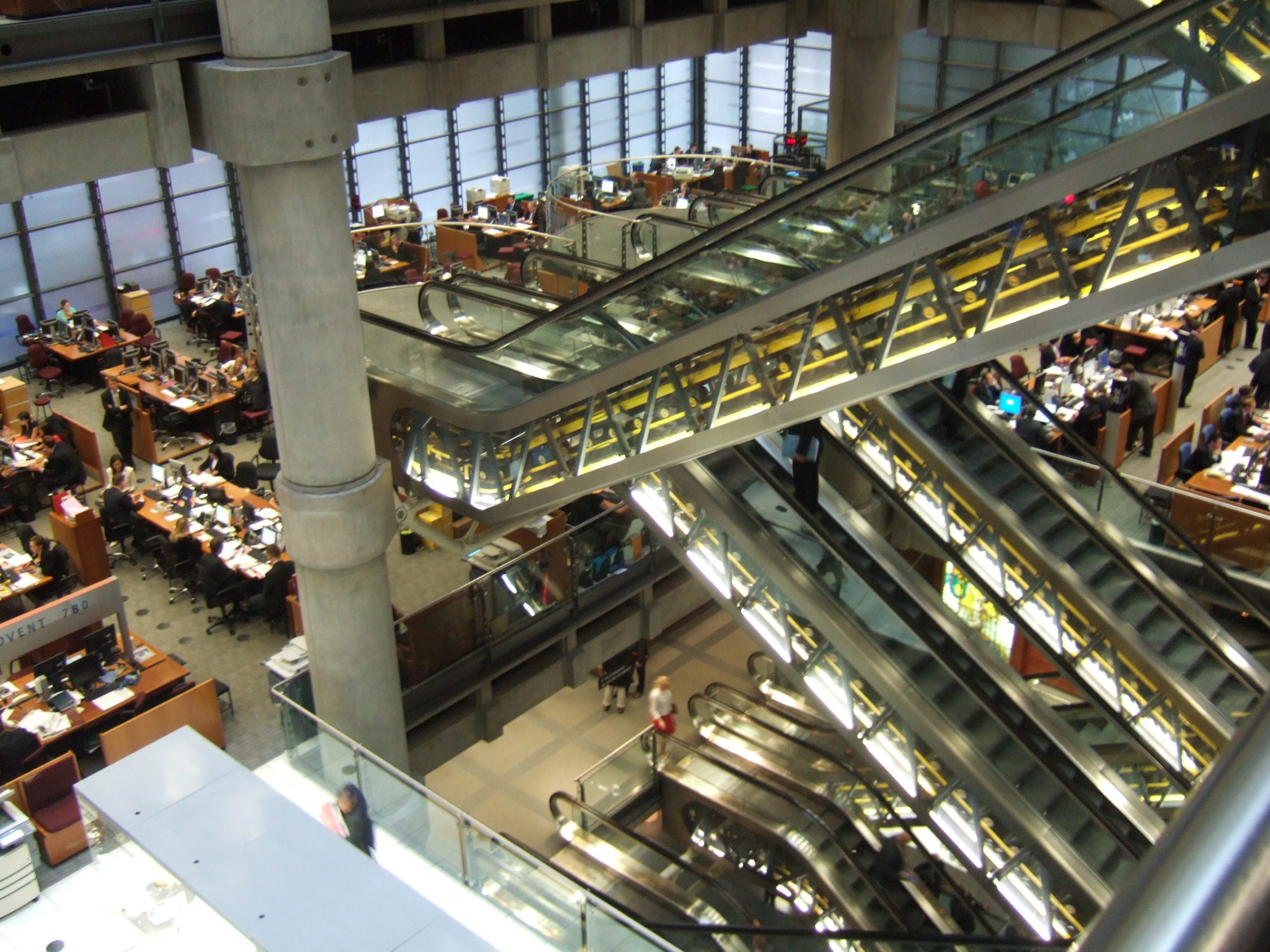キャプティブ 2025.07.17
CA 71 キャプティブ設立の広がり(保険不足)
目次
Copyright © Shinichiro Hatani 2025 All rights reserved
For those who prefer to read this column in English, the Japanese text is followed by a British English translation, so please scroll down to the bottom of the Japanese text.
今から約30年前、1996年4月の「保険業法」の改正は、「箸の上げ下ろしまで認可が必要」と言われた日本の保険業界にとっては、広範な規制緩和が行われた大きな転換点となった。その象徴的な出来事の一つが、日本でも生命保険会社、損害保険会社の相互参入が認められたことであり、「保険ビッグバン」と呼ばれた。
当時、筆者は、世界最大と言われていた米国の生損保コングロマリット、「CIGNA」(シグナ)のフィラデルフィア本社のキャプティブ部門で勤務していた。
1792年、米国で初めて株式会社としての損害保険会社が誕生した、The Insurance Company of North America (INA)である。長年世界最大級の損害保険会社であり続けた会社であったが、さらに1982年、世界最大級の生命保険会社であったThe Connecticut General Corporation(コネチカットゼネラル)と合併してできた会社が、このCIGNA Corporation(シグナ)であり、筆者が1994年米国フィラデルフィア本社に入社した会社であった。
CIGNA(シグナ)は当時60階建ての本社ビルを2本、国際本部、国内本部としてフィラデルフィアの街に有していた。入社初日、「CIGNA Museum(シグナ・ミュージアム(博物館))に連れて行ってあげなさい」とCEOに指示されたEVP(副社長)に、その一つのビルの中にあった「シグナ・ミュージアム」に連れて行かれた。
「これが、1792年、当社最初の保険証券、ロンドンからフィラデルフィアへの航海中の貨物にかかわる海上保険証券です」と見せられた記憶がある、それほど、伝統と格式を有する会社であった。
仕事にも待遇にも満足していたが、日本で起きた「保険ビッグバン」のニュースに接し、親しくしてくれていたCEOや同僚に悪いと思いながらも、居ても立っても居られず、「これまで培ったキャリアを活かすチャンス到来」とばかりに、損害保険会社への経営コンサルティング業を起業すべく帰国。
幸いにも、「CIGNA」時代に関わりの有った大手財閥系生命保険会社、その損害保険子会社の経営コンサルティングを委嘱いただくことができた。

1.キャプティブの優位性
一般の損害保険会社にとっては、「事業費」、なかでも「人件費」は、経営上大きな負担となっている。前述のとおり、1996年4月、改定保険業法が施行され,8月には、大手生命保険会社6社がそれぞれ損害保険(損保)子会社を設立、生命保険会社全社で50万人規模であった自前の強力な保険販売網「営業職員」(生保レディ)を活用して損保市場になだれ込み、「自動車保険」を「金城湯池」と予測して主戦場と考え、自動車保険販売に資本を集中投下して事業を開始した。しかし、現在「損保子会社」として存在しているのは、ただ一社、明治安田損害保険のみである。
1997年、明治生命・明治損害保険(現明治安田生命・現明治安田損害保険)より損保事業に関する経営コンサルティングを委嘱された筆者は、米国勤務で得た知見から、「自動車保険の行く末」を予見していたため、「自動車保険市場からの撤退」を強力に経営陣に進言した。「自動車保険は、いずれ事業費、特にIT投資の多寡によって勝敗が決まる」と踏んでいたからである。2004年の明治生命と安田生命との合併時に経営陣はそのことを実現した、「一切の自動車保険の販売から撤退、他社に自動車保険契約の全てを移行させた」のである。
その後は筆者が読んだとおり、自動車保険は激烈な「新商品開発=IT投資の場」となりコスト増に耐えきれなくなった生保の損保子会社は続々と合併、また市場から撤退していったのである。
また。生命保険会社は、強力な販売網は有していても、「損害保険金の査定、支払い網」は有していない。「自動車事故が起きようと起きまいと、全国に損害サービススタッフを常駐させる査定網を置かなければ、損害保険会社としては機能しない」ため、契約が取れようと取れまいと、「クルマは動くため、全国どこでも事故が起きる可能性のあるのが自動車保険」という点から、全国に査定網を置かなければならない。損害保険会社の社会的使命として、それが求められているからである。
しかし、「そのコスト」は「膨大な人件費」となる。多くの生保の損保子会社が自動車保険をメイン商品に選んだことは企業戦略上のミス、「損害保険会社として、主戦場(戦略ドメイン)選択の失敗」と言わざるを得ないであろう。「先を行く国、米国の保険事情」に真摯に注目していたら見えたはずの「失敗のシナリオ」であった。
このように、一般の損害保険会社の経営に非常に大きな影響を与える存在が、「事業費」である。この点、キャプティブは、その業務は「コンサルティング会社」、「運営管理会社」に外部委託する、また保険金の支払い査定は、元受保険会社がおこなうため、これらに掛かる「『事業費』を大幅に圧縮できている保険会社」であり、非常に効率的な損害保険経営ができている保険会社である。
キャプティブに引き受けリスクが滞留しないように、「キャプティブからの再保険手配」を的確におこなうことができれば、「リスクを事業収益に換えること(Turning Risk to Profit ®)」さえ可能になるのである。
全世界で7000社を超えるキャプティブが設立されるに至った、その「答え」が、この損害保険会社の収益構造から読み取れる。1.大きな「保険料」収入が見込めて、2.「保険金」の支払いが少額であれば、「事業費」が非常に低廉で済む経営形態であり、大きな収益をあげることができるからである。
2.損害保険の引受力(キャパシティ)
「想定外」という言葉が世間の耳目を集めたのは、2011年の東日本大震災の時であった。「想定外」をなくすことがリスクマネジメントの根幹である、理由は、そうでなければ、「想定外」の山積みでは、企業経営は立ちゆかないからである。
「もはや保険会社頼みでは立ちゆかない」と考えた米国の企業はキャプティブを更に活用することを志向して動き始めている。
損害保険の世界では、元受保険会社、再保険会社とメイン業務は大きく2つに分かれるが、世界全体で引受けられる損害保険の量(補償枠=キャパシティ)は決まっている、理由は「損害保険会社から再保険を引き受ける再保険会社の規模が決まっている」からである。
コロナ禍の際、全世界で起きた「マスク争奪合戦」。アッという間に「ドラッグストア」や「薬局」の棚からマスクが消え、「転売屋」と称する人たちが跳梁跋扈した。さらに、「噂話から拡がったデマ」で、その後棚から消えたのはトイレットペーパー類であった。
筆者は、世界経済を牽引してきた米国の多くのキャプティブを有する企業が「世界レベルで、損害保険の補償枠取りを始めた」と感じている。
「マスク」は今では、どこのドラッグストアでも薬局でも、またスーパーでも潤沢に陳列され、もはや手に取る人を見ることも無い程、各家庭には行き渡っている。しかし、損害保険はそうはいかない。最短でも「保険期間は1年間であるから、1年間は「棚に商品は無い状態」である。世界の再保険会社の引受力(キャパシティ)は決まっていて、そう容易く増やすことはできないからである。

3.「保険不足」の事態
本年6月27日付の「日本経済新聞」の特集記事、「リセット企業保険㊦」に「損保不正で露呈、リスク管理に甘さ 大企業は保険不足を懸念」と題した秀逸な記事が掲載された。
以下に引用する。
「損保不正で露呈、リスク管理に甘さ 大企業は保険不足を懸念」 「リセット企業保険㊦」
一度の事故で数百億円規模の被害が出るような一部の大企業で、保険不足を心配する声が相次ぐ。三菱重工もそのうちの一社だ。リスクマネジャーを務める増山啓氏は「1年で保険の補償額が2割小さくなり、3年続けば半減するようなイメージだ」と話す。
慶応大の柳瀬典由教授が2024年度に実施したアンケート調査によると、大企業の4割が十分な保険に入れないことへの懸念を示した。調査対象は売上高5000億円以上の大企業54社。8割は保険料上昇への懸念があると答えた。
理由の一つが保険の仕入れ値である再保険料の上昇だ。損保は再保険会社から再保険を買うことで、自社で抱えきれないリスクを転嫁している。自然災害の多発に伴い18年から再保険料が上昇し、今も高い水準にある。
もう一つは長年赤字だった火災保険の収支改善に向け、損保がリスクに応じて引受額を縮小していることがある。政策保有株を持つような得意先からリスクを過大に引き受けてきた過去があり、一度の自然災害などで収支が悪化しやすかった。
企業自身が自社のリスクを適切に管理して保険を選ぶ重要性が高まる。自ら保険子会社を設立してリスクを引き受ける「キャプティブ」をつくる動きが広がっている。
国内損保が引き受けた保険契約を対価を支払ってキャプティブに移す仕組みで、事故時の補償もキャプティブが担う。通常の保険では、事故がなければ保険料は社外に流出するが、キャプティブなら自社グループ内に資金がとどまる。事故を減らせば利益が出る。
セイコーエプソンは、24年9月、ハワイにキャプティブを設置した。国内損保に支払う保険料は上昇傾向だ。一部はキャプティブに環流されるため、事故を減らせばコスト上昇の影響を抑えることができる。
グループ内の事故情報はキャプティブに集まる。製造拠点の災害予防をする生産企画部門と連携し、データをもとに防災に向けた取り組みを進めているという。
保険以外でリスクを回避する金融サービスも登場した。三井住友銀行は4月、台風や大雨による風水害で生じた費用を融資の返済から免除する融資を始めた。火災保険では補償対象外のがれきの撤去費用など最大10億円まで補償する。
損保業界では旧ビッグモーターの保険金不正請求や企業向け保険料のカルテル、保険代理店を介した情報漏洩などの問題が相次いだ。損保会社と顧客企業との長年にわたるなれ合いが、営業現場の規律や常識を損なわせた面は否めない。
企業向け保険では、企業の総務部などが保険を担当していたが、実務は損保に任せっきりだった。リスク管理が不十分だった企業の実態も露呈した。三菱重工のようにリスク・マネージャーを置くのは、大企業でもごくわずかだ。
企業保険をめぐる長年の慣習はリセットされ、損保の営業は原点に立ち返る。東京海上日動火災保険は3月からリスク管理の実務を学べる講座の提供を始めた。大学関係者や専門家が講師を担う。5月末までに約40社が参加しているという。
「リスクマネジメント体制を高度化することは事業をさらに発展させることにつながる」。三井住友海上火災保険の船曳真一郎社長も1月、150人の前でリスクマネジメントの必要性について伝える講演を開いた。同社も5月から研修講座を開いた。
過大なリスクを引き受けていた損保が適正化に動き、企業自身もリスクを軽減する取り組みを進める。ゆがんだ関係を正して健全な市場を築くには、損保も企業もリスク管理能力を高めることが大前提になる。
(城川和真)
今回のまとめ
筆者は、5年前、2020年9月26日、本コラムに「CA 19 「棚」から消える損害保険」と題した一文を投稿した。
以下に抜粋する。
「D&O保険(会社役員賠償責任保険)の保険料は、本年2020年度第2四半期に59%上昇した」と米国の著名な保険専門誌「Business Insurance」が、9月17日報道した。この保険料上昇の傾向は、2019年から見られてきたが、コロナのパンデミックによってそれが一層加速されたようである、その背景としては、コロナのパンデミックへの対応策の巧拙によって損害を被ったと企業、企業の役員が訴訟されるケースが頻発、保険金支払いが急速に増えているからである。
保険市場は、どの経済活動とも同じく、「需要と供給曲線」によって、提供される「補償枠」もその補償料である「保険料」も決定される。D&O訴訟を危惧する企業のD&O保険への「需要」が急速に高まる一方、専門的な保険であるD&O保険については、「供給」側であるその補償を提供できる損害保険会社の数、またその補償枠の提供にも限りがあり、保険市場が「硬化(ハード化)」している状況であり、この傾向はD&O保険から他の保険へも波及しているようである。
この厳しい保険市場の状況に対応して、その「対応策」として補償を必要とする企業が着目したのが、自らが保険会社の役割を果たせる「キャプティブ」の活用である。
Business Insurance誌によると、キャプティブを現在所有している米国企業の約半数が、キャプティブ・プログラムを介する保険商品の数を増加させており、また「キャプティブの『保有割合』の増加」をおこない補償枠の増大を企図、更には「追加キャプティブ」の設立を予定している企業も非常に増加していることが判明したと伝えている。
同様に、英国のキャプティブの専門誌、Captive Review誌も、9月22日「リスク・マネージャーや企業保険の購入者を対象にした、2020年8月の調査の結果」として、実に「彼らの66.7%が厳しい市場に対応してキャプティブを検討している」と報道している。
これらの戦略を組み立て実行しているのはリスクマネジメント部門のトップ、企業によってはCRO(Chief Risk Officer)の職責を任じられているリスク・マネージャーであり、彼らの技量の巧拙によって、これまたその企業の命運も別れていく、まさに「リスクマネジメントが企業戦略の生命線」という状況を呈しているのが欧米である。
ご覧のとおり、「D&O保険については、『供給』側であるその補償を提供できる損害保険会社の数、またその補償枠の提供にも限りがあり、保険市場が『硬化(ハード化)』している状況であり、この傾向はD&O保険から他の保険へも波及しているようである。」と記している。
冒頭記したように、米国勤務の知見から「自動車保険の行く末からその撤退」を明治生命、明治損害保険に進言したように、5年前には、先に引用した「日本経済新聞の記事」にある「保険不足」を予見、キャプティブの設立を勧奨してきた。それが5年経って「現実のもの」となったのである。
今、弊社のコンサルティングによってハワイにキャプティブを設立された企業は、今回の「保険不足の事態」に巻き込まれることなく、しかも、ロンドン再保険市場を活用することによって低廉な保険料で、的確にリスクマネジメントを実行されている。
執筆・翻訳者:羽谷 信一郎
English Translation
Captive(CA) 71 The Spread of Captive Insurance Companies (Insufficient Underwriting Capacity in Non-Life Insurance)
About 30 years ago, in April 1996, the revision of the Insurance Business Act marked a significant turning point for Japan’s insurance industry, which had been subject to extensive regulations, with even the most minor decisions requiring approval. This revision, often referred to as the ‘insurance big bang,’ brought about a wide range of regulatory reforms. One of the most symbolic changes was the lifting of restrictions on cross-ownership between life insurance companies and property and casualty insurance companies in Japan.At the time, the author was working at the captive division of CIGNA, the world’s largest life and property and casualty insurance conglomerate, at its Philadelphia headquarters.
In 1792, The Insurance Company of North America (INA) was established as the first property and casualty insurance company in the United States.This company had been one of the world’s largest property and casualty insurance companies for many years, but in 1982, it merged with The Connecticut General Corporation, which was then the world’s largest life insurance company, to form CIGNA Corporation, the company I joined in 1994 at its headquarters in Philadelphia, U.S.
At the time, CIGNA owned two 60-story headquarters buildings in Philadelphia, one serving as the international headquarters and the other as the domestic headquarters. On my first day, I was told by the EVP (Executive Vice President) to ‘take him to the CIGNA Museum,’ and we were taken to the ‘CIGNA Museum’ located within one of the buildings.I remember being shown a document and told, ‘This is the first insurance policy issued by our company in 1792, a marine insurance policy related to cargo during a voyage from London to Philadelphia.’ It was a company with such a rich tradition and prestige.
I was satisfied with my work and treatment, but when I heard the news of the ‘insurance big bang’ in Japan, I felt bad for my CEO and colleagues who had been so kind to me, but I couldn’t stay where I was. I decided that this was my chance to make use of the career I had built up, so I returned to Japan to start a management consulting business for non-life insurance companies. Fortunately, I was commissioned to provide management consulting services to the property and casualty insurance subsidiary of a major life insurance company affiliated with a large conglomerate that I had been involved with during my time at CIGNA.
1. Advantages of captive insurance
For general non-life insurance companies, operating expenses, especially personnel expenses, are a major burden on management. In April 1996, the revised Insurance Business Act came into effect, and in August, six major life insurance companies established non-life insurance subsidiaries.They flooded the non-life insurance market by utilising their own powerful insurance sales network of 500,000 sales staff (life insurance ladies) and focused their capital on selling automobile insurance, which they predicted would become their mainstay business. However, currently, only one company, Meiji Yasuda Non-Life Insurance, remains as a non-life insurance subsidiary.
In 1997, the author was commissioned by Meiji Life Insurance and Meiji General Insurance (now Meiji Yasuda Life Insurance and Meiji General Insurance) to provide management consulting on their non-life insurance business. Based on his knowledge gained while working in the United States, he strongly advised the management team to withdraw from the automobile insurance market, as he foresaw the future of automobile insurance.This was because the author believed that ‘the future of automobile insurance would ultimately be decided by the level of operational expenses, particularly IT investments.’ In 2004, during the merger between Meiji Life and Yasuda Life, the management team implemented this strategy, completely withdrawing from the sale of automobile insurance and transferring all automobile insurance contracts to other companies.
As I read, the automobile insurance market subsequently became a fierce battleground for ‘new product development = IT investment,’ and life insurance companies’ property and casualty insurance subsidiaries, unable to withstand the rising costs, merged one after another or withdrew from the market.
Life insurance companies, despite having strong sales networks, lack the ‘damage assessment and payment networks’ required for property insurance. ‘Whether or not a car accident occurs, a nationwide network of damage assessment staff must be maintained to function as a property insurance company.’ Due to the nature of automobile insurance, which can result in accidents anywhere in the country regardless of whether contracts are secured, a nationwide assessment network is indispensable. This is a social responsibility demanded of property insurance companies.
However, ‘the cost’ of this is ‘enormous labour costs.’ Many life insurance companies’ property and casualty insurance subsidiaries chose automobile insurance as their main product, which was a strategic mistake. It can be said that this was a ‘failure in selecting the main battlefield (strategic domain)’ as a property and casualty insurance company. This was a ‘failure scenario’ that should have been foreseeable if they had sincerely paid attention to the insurance situation in the United States, which is a leading country in this field.
As you can see, operating expenses have a huge impact on the management of general non-life insurance companies. In this regard, captive insurance companies are insurance companies that can significantly reduce operating expenses by outsourcing their operations to consulting companies and management companies and having the primary insurers assess insurance claims. As a result, they are able to operate their non-life insurance businesses very efficiently.
If captive reinsurance arrangements can be made appropriately so that captive underwriting risks do not remain, it is even possible to ‘turn risk into profit (Turning Risk to Profit ®)’.
The answer to why more than 7,000 captives have been established worldwide can be found in the revenue structure of non-life insurance companies.
1. A business model that can generate significant ‘premium’ income, 2. If ‘claims payments’ are minimal, ‘operating expenses’ can be kept extremely low, enabling the company to achieve substantial profits.
2. The underwriting capacity (capacity) of property and casualty insurance
The term ‘unforeseen’ gained widespread attention during the 2011 Great East Japan Earthquake. Eliminating ‘unforeseen’ events is the cornerstone of risk management, as without doing so, a company cannot sustain its operations amid a mounting pile of unforeseen events.
U.S. companies that have concluded that they can no longer rely solely on insurance companies are beginning to explore further utilisation of captives.In the world of non-life insurance, there are two main types of companies: primary insurers and reinsurers. However, the total amount of non-life insurance that can be underwritten worldwide (compensation limit = capacity) is fixed because the size of reinsurers that underwrite reinsurance from non-life insurance companies is fixed.
During the COVID-19 pandemic, there was a global scramble for masks. In the blink of an eye, masks disappeared from the shelves of drugstores and pharmacies, and people dubbed ‘resellers’ began to run rampant. Furthermore, due to ‘misinformation spread by rumours,’ toilet paper products also disappeared from the shelves. The author believes that many U.S. companies with captives, which have been driving the global economy, have begun to secure capacity for property and casualty insurance on a global scale.
Masks are now abundantly stocked on the shelves of every drugstore, pharmacy, and supermarket, and are so widely available that it is rare to see anyone picking them up.
However, this is not the case for property insurance. At a minimum, the insurance period is one year, meaning that for one year, the product is not available on the shelves. This is because the underwriting capacity of global reinsurance companies is fixed and cannot be easily increased.
3. The situation of ‘insurance shortage’
On 27 June this year, the Nikkei Shimbun published an excellent article titled ‘Reset Corporate Insurance’ in its special feature section, which stated, ‘Insurance fraud exposes lax risk management; large companies concerned about insurance shortages.’
The following is an excerpt from the article.
‘Exposed by Property Insurance Fraud: Lax Risk Management Leaves Large Companies Worried About Insurance Shortfalls’ ‘Resetting Corporate Insurance Part 2’
Some large companies, where a single accident could result in losses of hundreds of billions of yen, are increasingly concerned about insurance shortfalls. Mitsubishi Heavy Industries is one such company. Kei Masuyama, a risk manager at the company, said, ‘The amount of insurance coverage has decreased by 20% in one year, and if this continues for three years, it could be halved.’
According to a survey conducted by Professor Noriyuki Yanase of Keio University in the 2024 fiscal year, 40% of large corporations expressed concerns about being unable to secure adequate insurance coverage. The survey targeted 54 large corporations with annual sales of 500 billion yen or more. 80% of respondents expressed concerns about rising insurance premiums.
One reason is the increase in reinsurance premiums, which are the costs of purchasing reinsurance from reinsurance companies. Property and casualty insurers transfer risks they cannot bear on their own by purchasing reinsurance from reinsurance companies.
Reinsurance premiums have been rising since 2018 due to the frequent occurrence of natural disasters and remain at high levels.
Another factor is that property and casualty insurers are reducing the amount of coverage they provide in response to the long-standing deficit in fire insurance. In the past, they had taken on excessive risks from major clients who held policyholder shares, making them vulnerable to financial deterioration due to a single natural disaster.
The importance of companies appropriately managing their own risks and selecting insurance is increasing. There is a growing trend toward establishing captive insurance companies to assume risks.
This involves transferring insurance contracts underwritten by domestic property and casualty insurance companies to captives in exchange for payment, with the captives assuming liability for compensation in the event of an accident. In traditional insurance, premiums flow out of the company if no accidents occur, but with captives, funds remain within the group. Reducing accidents leads to increased profits.
Seiko Epson established a captive in Hawaii in September 2024. Premiums paid to domestic property and casualty insurance companies are on an upward trend. Since part of these premiums are redirected to the captive, reducing accidents can mitigate the impact of rising costs.
Accident information within the group is centralised at the captive. The captive collaborates with the production planning department, which is responsible for disaster prevention at manufacturing sites, to advance disaster prevention initiatives based on data.
Financial services to mitigate risks beyond insurance have also emerged. In April, Mitsubishi UFJ Bank launched a loan programme exempting repayment for costs incurred due to typhoons or heavy rain. In fire insurance, it covers debris removal costs not covered by compensation, up to a maximum of 1 billion yen.
The property and casualty insurance industry has faced issues such as fraudulent insurance claims by the former Big Motor, cartels in corporate insurance premiums, and information leaks through insurance agents.It cannot be denied that the long-standing collusion between non-life insurance companies and their client companies has undermined discipline and common sense in the sales field.
In corporate insurance, the general affairs departments of companies were responsible for insurance, but the actual work was left entirely to non-life insurance companies. This exposed the reality of companies with inadequate risk management. Even among large companies, only a few, such as Mitsubishi Heavy Industries, have risk managers.
The long-standing practices surrounding corporate insurance are being reset, and insurance companies are returning to basics. Tokyo Marine Nichido Fire Insurance began offering courses in March to teach risk management practices. University faculty and experts serve as instructors. Approximately 40 companies have participated as of the end of May.
‘Enhancing risk management systems will lead to further business development.’Mitsui Sumitomo Marine & Fire Insurance President Shinichiro Funabiki also delivered a lecture in January to 150 people on the necessity of risk management. The company also launched training courses in May.
Property and casualty insurers that had been taking on excessive risks are now moving toward rationalisation, while companies themselves are also advancing efforts to reduce risks. To correct distorted relationships and build a healthy market, both property and casualty insurers and companies must enhance their risk management capabilities as a prerequisite.
(Kazuma Shirokawa)
Summary of this issue
Five years ago, on 26 September 2020, I wrote an article for this column titled ‘CA 19: Non-life insurance disappears from the shelves.’
The following is an excerpt from that article.
‘Premiums for D&O insurance (directors and officers liability insurance) rose by 59% in the second quarter of the 2020 fiscal year,’ reported the renowned U.S. insurance industry magazine ‘Business Insurance’ on 17 September.This trend of rising insurance premiums has been observed since 2019, but it seems to have accelerated further due to the COVID-19 pandemic. The background to this is that there have been frequent cases of companies and corporate executives being sued for damages suffered as a result of the effectiveness of measures taken in response to the COVID-19 pandemic, and insurance payments are rapidly increasing.
Like any other economic activity, the insurance market is governed by the ‘law of supply and demand,’ which determines both the ‘compensation coverage’ provided and the ‘premium’ paid for that coverage.However, while the demand for D&O insurance from companies concerned about D&O litigation has surged, the supply side—the number of property and casualty insurance companies capable of providing such specialised coverage and the limits on the compensation they can offer—is limited. This has led to a ‘hardening’ of the insurance market, a trend that appears to be spreading from D&O insurance to other insurance products.
In response to this challenging insurance market environment, companies requiring compensation have turned their attention to the use of ‘captives,’ which allow them to assume the role of an insurance company.
According to Business Insurance magazine, approximately half of U.S. companies that currently own captives are increasing the number of insurance products offered through their captive programmes, and a significant number of companies are also increasing their ‘captive ownership ratio’ to expand their coverage limits or planning to establish additional captives.Similarly, Captive Review, a UK-based captive insurance specialist magazine, reported on 22 September that ‘66.7% of risk managers and corporate insurance buyers surveyed in August 2020 are considering captives to address challenging market conditions.’
Those responsible for developing and implementing these strategies are top-level risk managers, and in some companies, Chief Risk Officers (CROs). The success or failure of these strategies will determine the fate of their companies, highlighting the critical role of risk management in corporate strategy in Europe and the United States.
As noted, ‘Regarding D&O insurance, the number of property and casualty insurance companies capable of providing such coverage, as well as the limits on the coverage they can offer, are limited, leading to a “hardening” of the insurance market. This trend appears to be spreading from D&O insurance to other insurance products.’
As mentioned at the beginning, based on my experience working in the United States, I advised Meiji Life Insurance and Meiji Fire & Marine Insurance to consider the future of automobile insurance and its potential withdrawal. Five years ago, I foresaw the ‘insurance shortage’ mentioned in the previously cited article from the Nikkei Newspaper and recommended the establishment of a captive. Five years later, this has become a reality.
Currently, companies that have established captives in Hawaii through our consulting services have not been affected by the current ‘insurance shortage’ and are able to effectively manage risk at low premiums by utilising the London reinsurance market.
Author/Translator: Shinichiro Hatani


